Rasam powder is a traditional South Indian spice blend that adds a distinctive flavor to rasam, a spicy lentil soup enjoyed in the region. My recipe focuses on creating an authentic Mysore-style saarina pudi, a rich and fragrant rasam powder that embodies the distinct taste of the Mysore region.
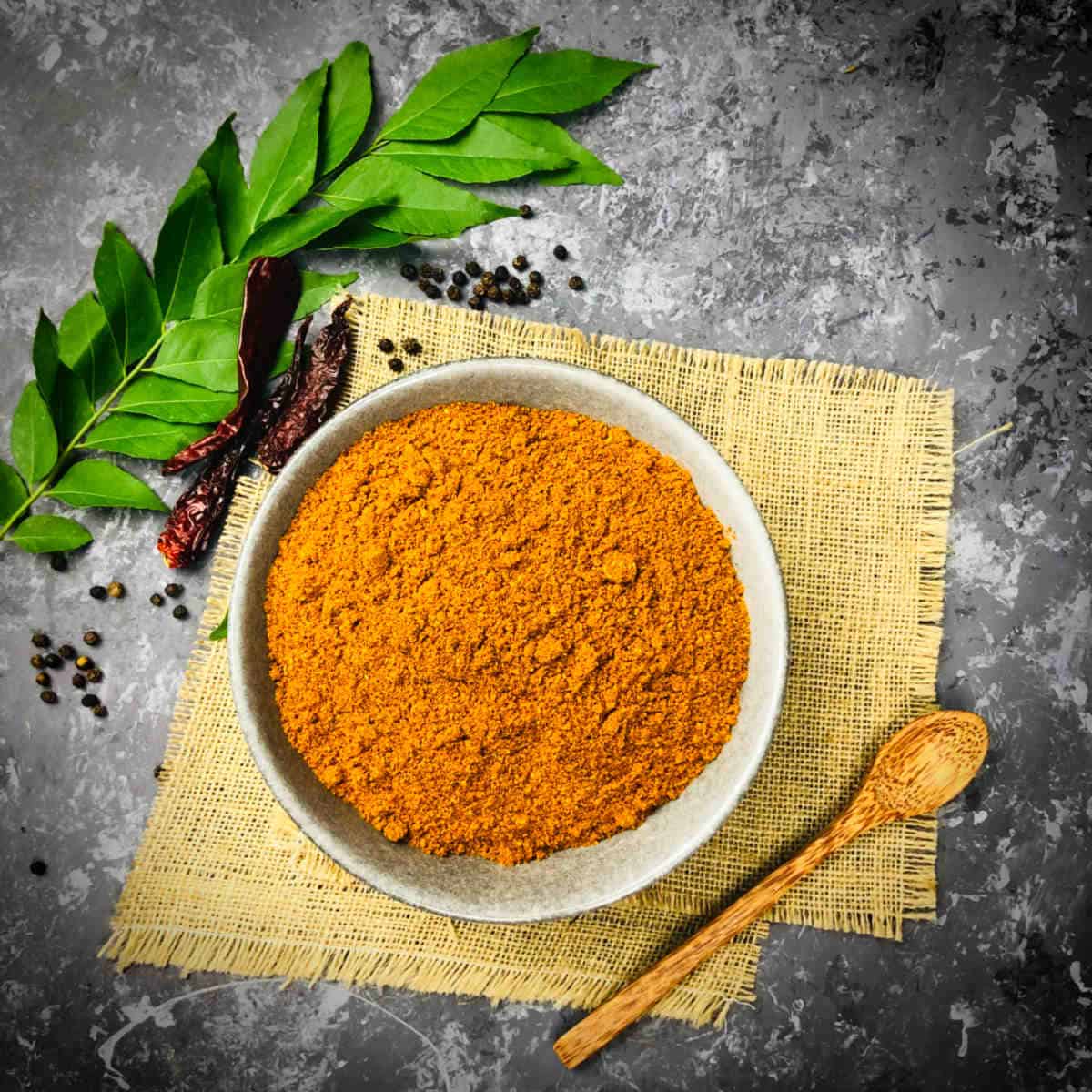
Why you will love this rasam powder recipe?
- A balanced blend of spices: This rasam powder recipe has a harmonious combination of spices that brings out the unique flavors of the dish. It has the right balance of heat, tanginess, and aroma.
- Authentic flavors: My recipe here is authentic Mysore rasam powder which will allow you to experience the traditional taste of Mysore rasam.
- Freshly roasted and ground spices: Freshly roasted and ground spices impart a more intense and aromatic taste to the rasam powder.
- Shelf stability: Rasam powder has a good shelf life, retaining its flavor and potency for an extended period.
What is rasam?
Rasam is a spicy-tangy-sweet lentil soup made with toor dal (pigeon pea or tur dal), tomatoes, tamarind, and rasam powder. This thin soup-like dish is called 'saaru' in Kannada. The most common rasam I make is Mysore rasam. While a typical South Indian rasam is watery and served mostly like a soup, Mysore rasam is prepared slightly thick and is served with rice.
What is rasam powder?
Homemade rasam powder recipe has many variations - it varies from state to state in south India and also varies within regions of each state. My easy recipe is what is commonly found in the Mysore region of Karnataka and is called saarina pudi or Mysore rasam powder. This version is slightly different from the Udupi rasam powder recipe, where the spices are fried in coconut oil instead of dry roasting.
Ingredients
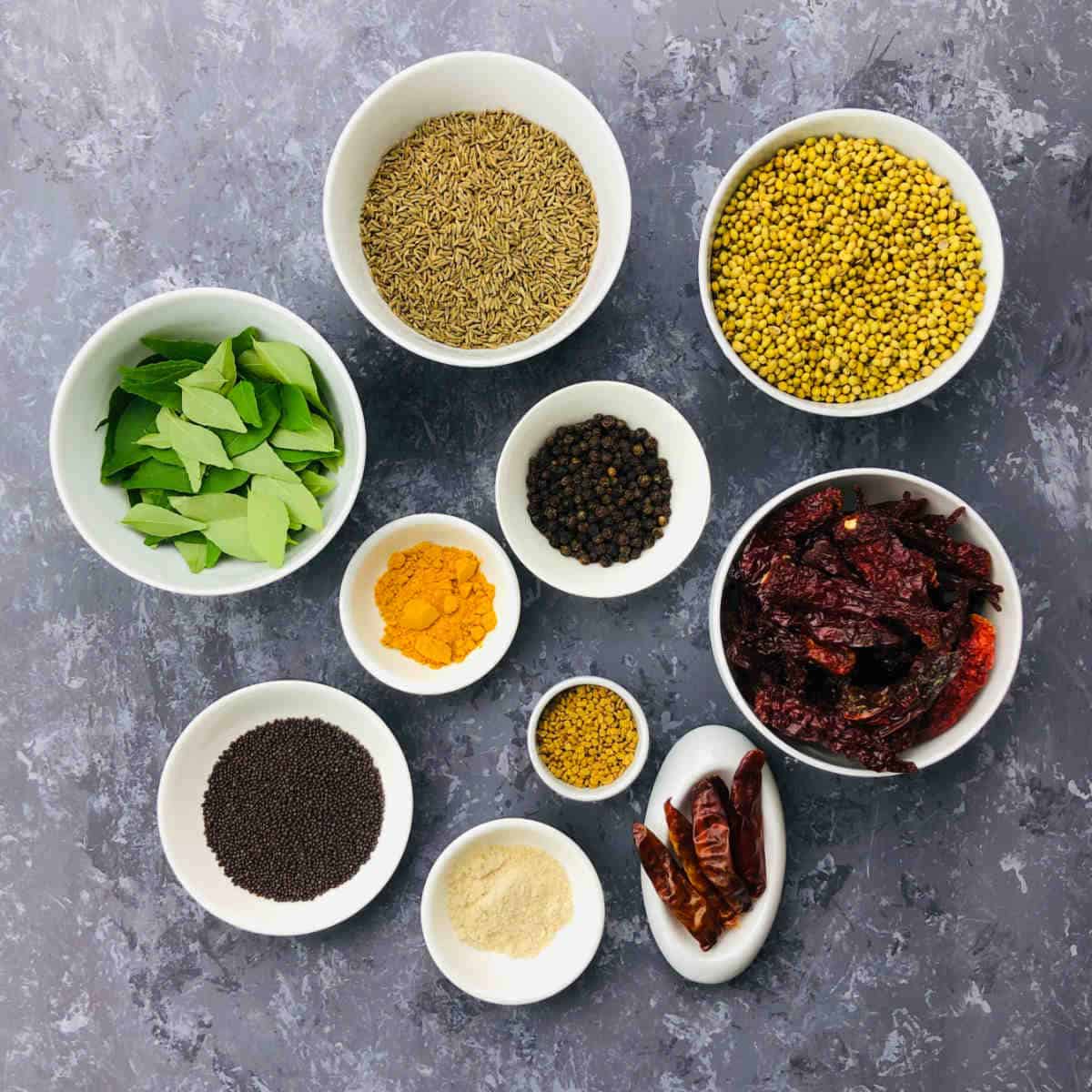
See the recipe card for full information on ingredients and quantities.
Step-by-step instructions
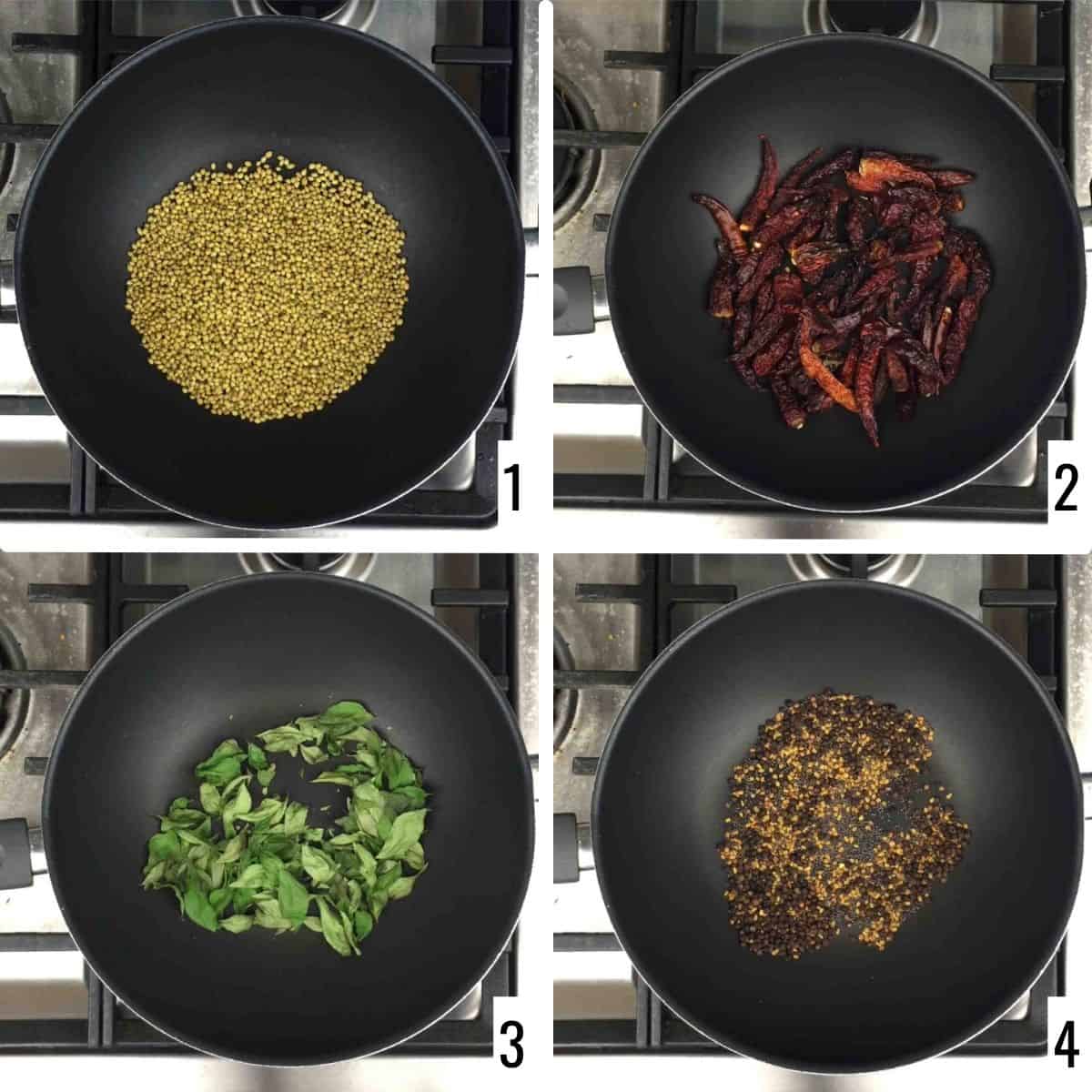
Step 1: Heat a
Step 2: Add both varieties of dry red chilies (Byadagi and Guntur) and roast them until they are crispy and puff up. Set them aside. Now, dry roast curry leaves until they are dried and crispy. Set them aside (images 2 and 3).
Step 3: Next, add black peppercorns, mustard seeds, and methi seeds. Fry them until they are golden brown (image 4).
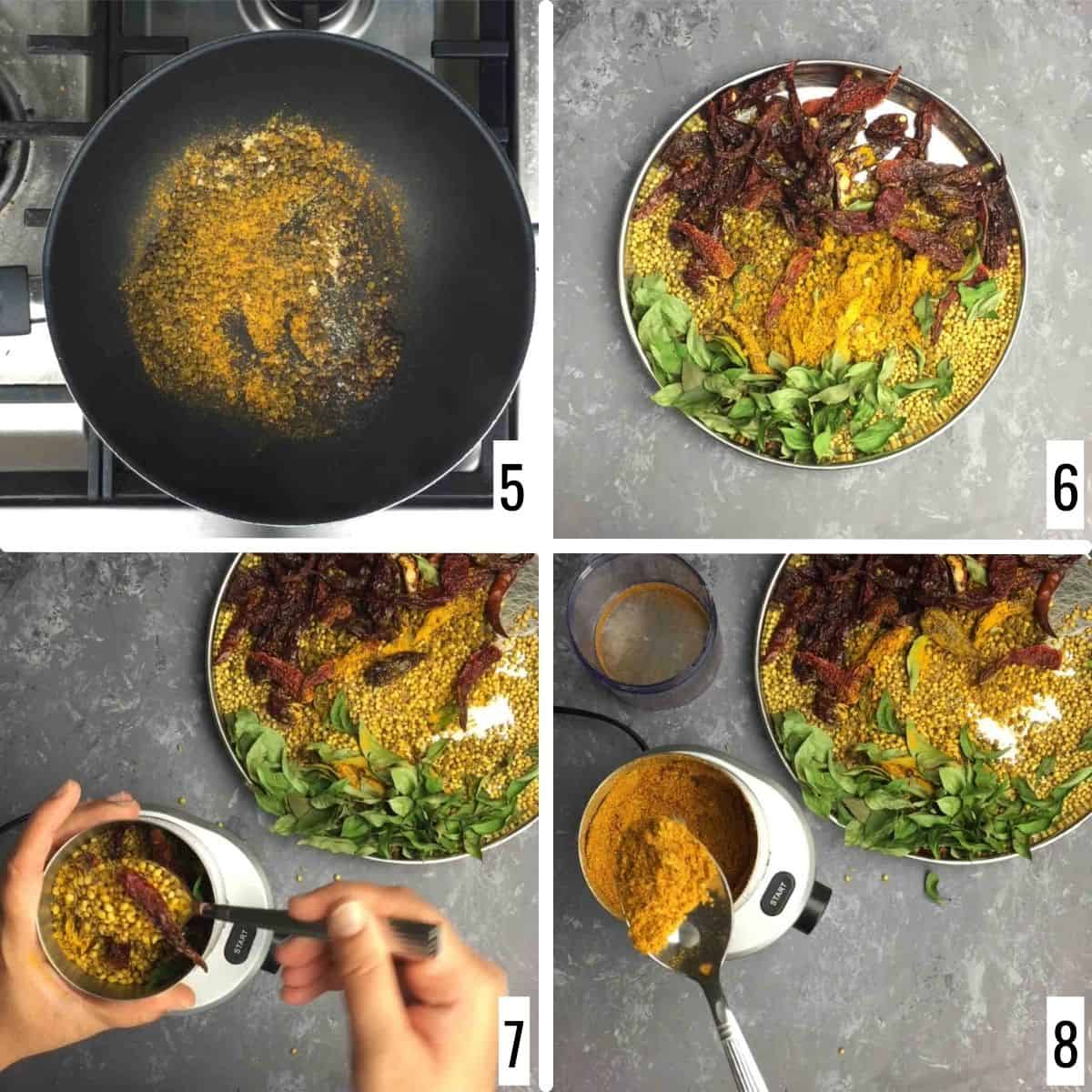
Step 4: Add asafoetida powder and turmeric powder. Fry for a few seconds (not more than 10 seconds). Set everything aside on a plate and let the roasted ingredients cool and come to room temperature (images 5 and 6).
Step 5: Grind into a fine powder using a spice grinder or mixie (images 7 and 8). Store the ground rasam powder in a clean and dry airtight container.

Expert Tips
Do all the dry roasting on low heat. Heat the
After adding hing and turmeric powder, mix only for a few seconds (not more than 10 seconds). These two ingredients tend to burn quickly, which may impart a bitter taste to the masala powder.
Always use a clean and dry spoon when handling the spice powders. Any moisture content will reduce the shelf life of the spice powder.
This recipe gives me 15 tablespoons (approximately 230 grams) of rasam spice mix. You may choose to half or double the recipe as per your need.
Recipe FAQs
While some spices are common between both spice powders, there are some key differences. The most important difference is the texture. Rasam podi has to be ground into a very fine powder, whereas sambar podi can be fine to slightly coarse. In terms of ingredients, chana dal (Bengal gram) and urad dal (black gram) are used in making sambar powder. Black pepper is a key ingredient in rasam powder, whereas it is not used in sambar powder.
Yes, you can adjust the spice levels in rasam powder to suit your personal taste preferences. The beauty of making rasam powder at home is that you have the flexibility to customize the spice blend according to your desired heat and flavor intensity.
Yes, this spice blend can be used in dishes other than rasam to add a unique flavor and spice profile. While it is primarily associated with making rasam, its versatility allows it to enhance the taste of various other dishes. You can sprinkle a small amount of rasam powder into vegetable curries or stir-fries to give them a subtle spicy kick. Rasam powder can also be used as a seasoning for various snacks like popcorn or roasted chickpeas and nuts.
To store rasam powder properly, place it in an airtight container, ensuring it's completely dry before storing. Keep the container in a cool, dry place away from direct sunlight and heat sources. If you wish to extend its shelf life, consider refrigerating it for up to 8-12 months or freezing it for 1-2 years. No thawing is required, and you can use the powder directly from the fridge or freezer.
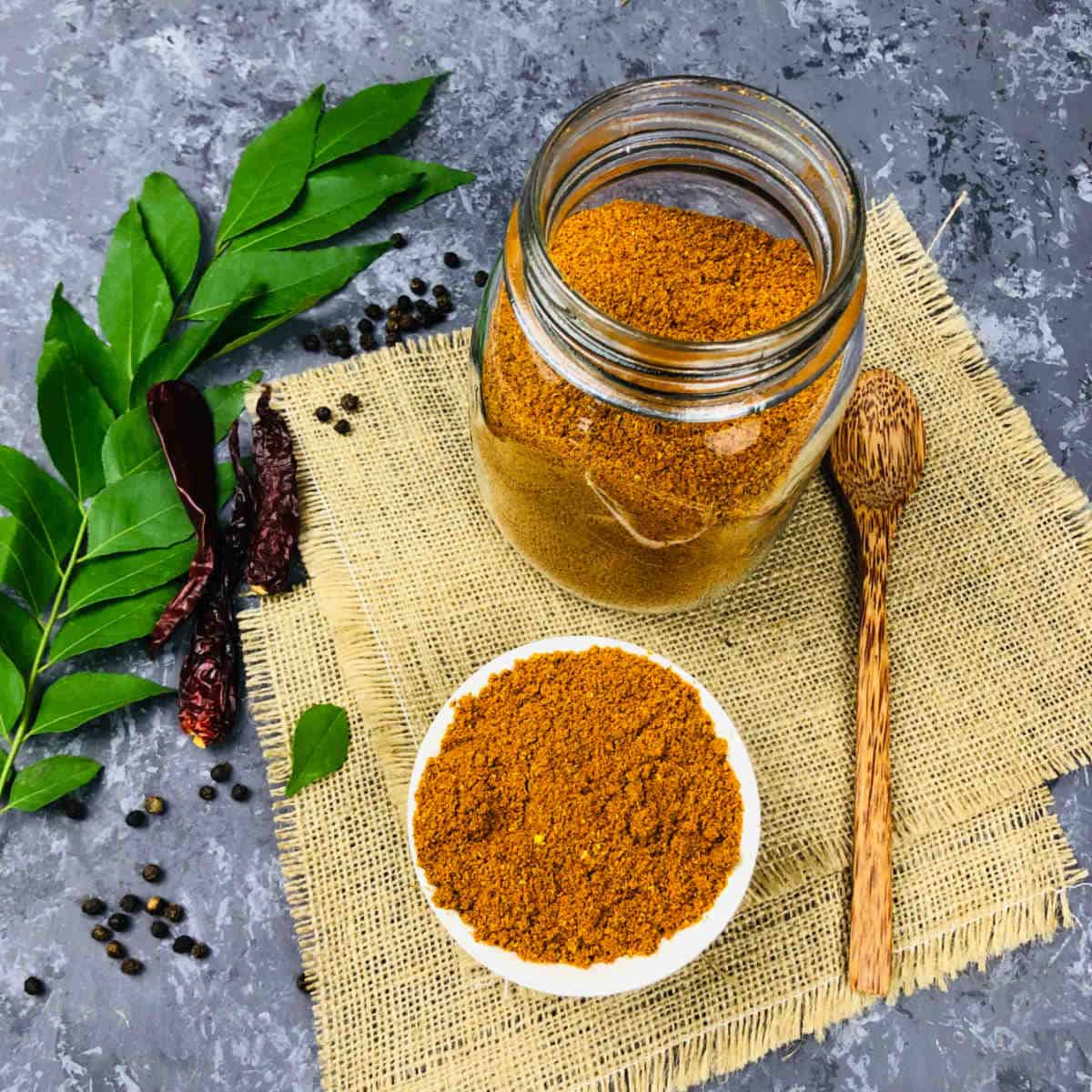
More spice blend recipes
If you tried this Rasam Powder / Saarina Pudi Recipe or any other recipe on my website, please leave a ? star rating and let me know how it went in the ? comments below.
Recipe card
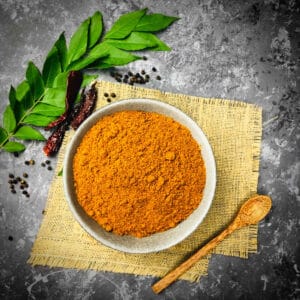
Homemade Rasam Powder / Saarina Pudi
Ingredients
- 1 cup coriander seeds (dhaniya)
- ½ cup cumin seeds (jeera)
- 1 cup Byadagi red chili mildly spiced dried red chili
- 5-6 Guntur chili hot dried red chili
- ½ cup curry leaves
- 2 tablespoon black pepper
- 1 tablespoon fenugreek seeds (methi seeds/menthya)
- 1 tablespoon black mustard seeds
- ½ tablespoon turmeric powder
- ½ tablespoon asafoetida hing
Instructions
- Heat a frying pan until it is hot and turn the flame to low.
- Add coriander seeds and cumin seeds. Dry roast them until they are aromatic. Set them aside on a plate or wide tray.
- Add both varieties of dried chili (Byadagi and Guntur) and roast them until they are crispy and puff up. Set them aside.
- Now, dry roast curry leaves until they are dried and crispy. Set them aside.
- Next, add black pepper, mustard seeds, and fenugreek seeds. Fry them until they are golden brown.
- Add hing and turmeric and fry for a few seconds (not more than 10 seconds). Set everything aside.
- Let all the ingredients cool down completely.
- Grind into a fine powder using a spice grinder or mixie
- Store in a dry and clean air-tight container.
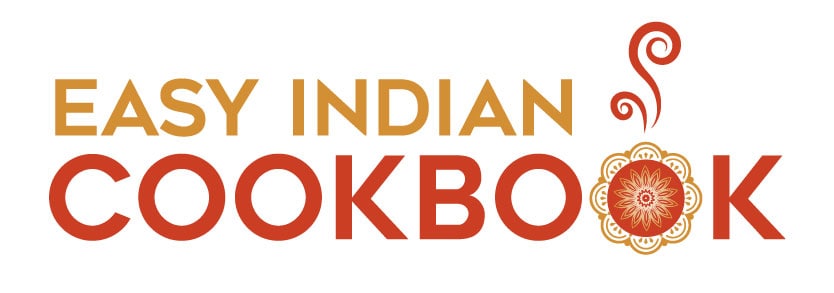

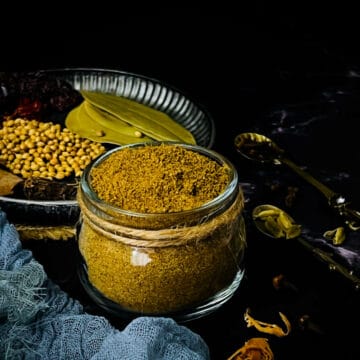
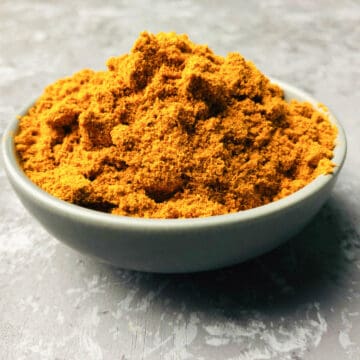
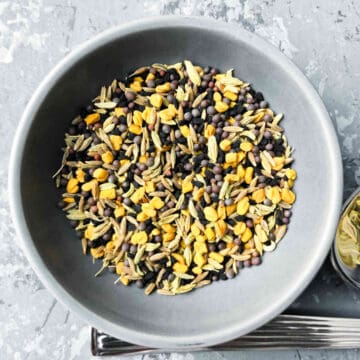
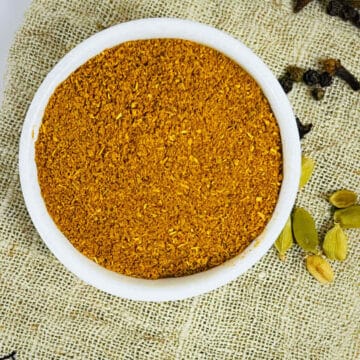
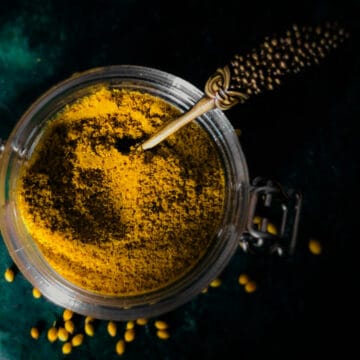
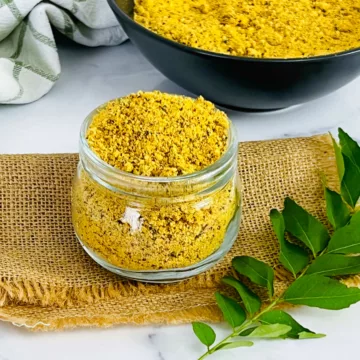
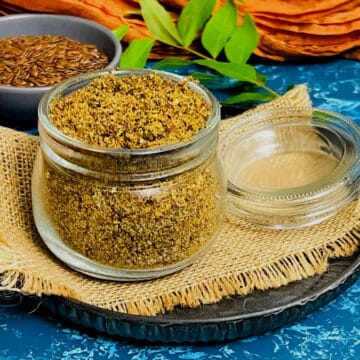
Comments
No Comments